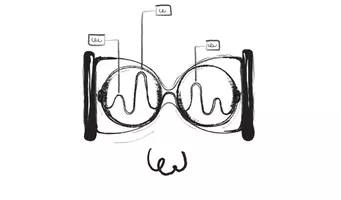
Personas: the empathic alignment tool.
When are personas a good idea
No data, no truth
Personas are a good idea when you want to create a product that meets real user needs, is useful, easy and pleasant to use. Therefore, we need to understand who our users are and what these users need. Understanding our users is one of the fundamental principles of user-centered design. If we do not understand our user, we will make decisions for ourselves. Moreover, we will make decisions based on assumptions.
Having a lot of data is great. But you have to turn all this raw data into something more understandable for our team or stakeholders. Stakeholders need to be on the same page. There are many UX products we can create as an alignment tool, such as personas to align with stakeholders. If we can't communicate our research findings, we can't generate the best solutions to minimize risk. Personas are a powerful medium to align UX professionals and stakeholders. They help us overcome the disadvantages of showing research data alone. Some top of mind benefits of personas are:
- getting rid of self-referential design;
- giving us a source of truth to use for decision-making;
- they help us keep the focus throughout the product life cycle
Why personas work
Gaining experience
First, as humans, we like to have experiences. A good example of this is watching a sad movie. We can have emotions, thoughts, beliefs and internal reactions to a fictional character. Well-created personas are very good at conveying this experience to your team and stakeholders.
Theory Mind
Second, personas can help us predict someone's behavior by understanding their mental state. This is called theory of mind, which refers to our ability to attribute mental states to other people.
In psychology, theory of mind refers to the ability to understand other people by attributing their mental states (i.e., assuming what is going on in their minds). (...) Having a functional theory of mind is considered crucial for success in everyday human social interactions. People use such a theory when analyzing, judging, and inferring the behavior of others.
- Source: WikiPedia, Theory of Mind
Empathy and storytelling
For thousands of years, humans have been creating and telling stories. Humans have the ability to understand and identify with other people's feelings. Evolution has made us particularly good at remembering stories. Stories were used to teach us about dangers and challenges in life. This increased our chances of survival. By understanding the user's context and adding faces with stories to the output, personas can help us tell that story and bring empathy to the meeting room.
Furthermore, researchers at the Radiological Society of North America (RSNA) did a study where they used two groups of radiologists. One group had to examine x-rays without a picture of the patient, and the other group had to examine x-rays with the picture of the patient next to them. The study found that radiologists who were exposed to a patient's photo wrote more punctual reports on the x-rays than the radiologists who had to examine without a patient's photo.
In addition, a study by Frank Long at the National College of Art and Design in Dublin conducted an experiment with a group of students who were assigned to design a software interface over a 5-week period. Each group of students had to complete the task using different tools. Three groups had to design the software interface with a list of design specifications, three other groups had access to a persona with illustration and a written scenario, and another three groups had a persona with real image and a scenario storyboard. The study found that designs with personas and scenarios scored better than the groups that only had access to a list of design specifications.
Common challenges can be a barrier to creating personas
According to the tweets I read a few weeks ago, many UX professionals struggle with the fact that personas are often seen as a waste of time and money, or that they are discontinued before they are even finished. This is not necessarily true. Personas can overcome these challenges. I will write about two common challenges you may encounter when personas are a good idea.
No leadership buy-in
Executives can be pretty confident that they know their users, especially if they have been doing this for a long time. That's why - as mentioned earlier - it's important to think of personas as an alignment tool. Personas can help align the team and put an end to unnecessary discussions.
No ownership within the team
Another good example involves a team that has no ownership is of the personas. Personas created by an individual are rarely effective. The team will not feel connected to the personas and therefore will not create the expected empathy with your end user. Therefore, stakeholders and users must be involved in the process to create ownership within the team.
Conclusion
There is so much more to say about personas. Besides knowing the benefits and when personas are a good idea, the challenge also lies in the creation and effort required to create the right personas. Including the right data in your personas is one of the key ingredients for success. The right personas can sometimes be used for many years, in many projects, throughout an organization. When do you create which type of personas? And how much effort is needed when? As the answer to many UX methodologies goes: it depends. But that's for another time.
Sources
Personas: Turn User Data Into User-Centred Design, NN/group, attended February 2022, https://www.nngroup.com/training/course/3744/personas/
Assumption quote, Jerry Belson, WikiPedia, edited on 27 February 2022, https://en.wikipedia.org/wiki/Jerry_Belson
Theory of Mind, WikiPedia, edited on 20 April 2022, https://en.wikipedia.org/wiki/Theory_of_mind
Patient Photos Spur Radiologist Empathy And Eye for Detail, ScienceDaily, December 2008, https://www.sciencedaily.com/releases/2008/12/081202080809.htm
Real or Imaginary: The Effectiveness of Using Personas in Product Design, Frontend, Frank Long, 2009, https://www.frontend.com/thinking/using-personas-in-product-design



